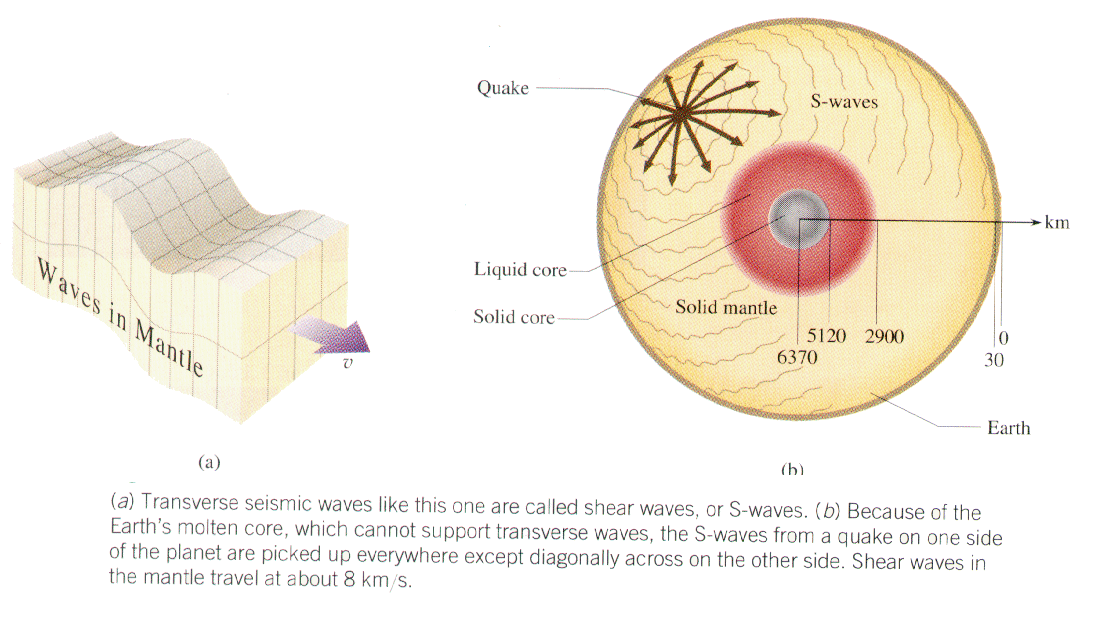
Seismic waves generated by an earthquake source are commonly classified into two main types: the P and S waves. Both types are propagated within the Earth. The existence of these types of seismic waves was predicted during the 19th century, and modern investigators have found that there is a close correspondence between such theoretical calculations and seismographic measurements of the waves.

The P (or primary) waves travel through the body of the Earth at the highest speeds. They are longitudinal waves that can be transmitted by both solid and liquid materials in the Earth's interior. With P waves, the particles of the medium vibrate in a manner similar to sound waves, and the transmitting rocks are alternately compressed and expanded.

The other type of body wave, the S (or secondary) wave, travels only through solid material within the Earth. With S waves, the particle motion is transverse to the direction of travel and involves the shearing of the transmitting rock.
Because of their greater speed, the P waves are the first to reach any point on the Earth's surface. The first P-wave onset starts from the spot where an earthquake originates. This point, usually at some depth within the Earth, is called the focus, or hypocentre. The point immediately above the focus at the surface is known as the epicentre.
Excerpt from the Encyclopedia Britannica without permission.